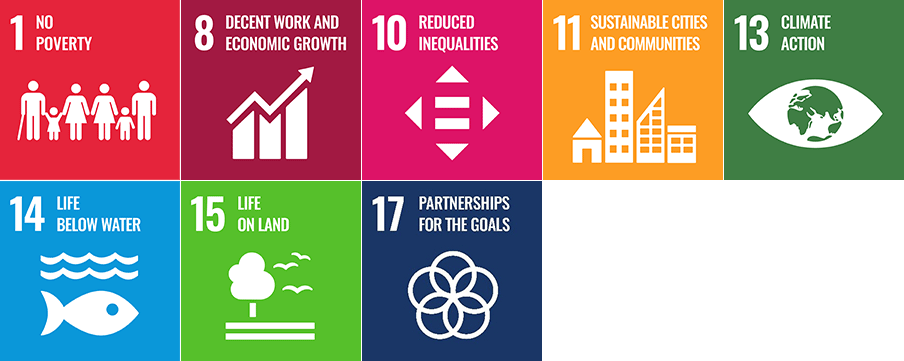- JP
- EN
MOL to Join Mangrove Restoration/Conservation Project in Indonesia
- Aiming to Become a Nature-positive Company for Protecting Marine Biodiversity -
January 06, 2022
TOKYO-Mitsui O.S.K. Lines, Ltd. (MOL; President & CEO: Takeshi Hashimoto) today announced that it has teamed up with YL Forest Co., Ltd. (YLF: President: Naoto Akune; Headquarters: Fukuoka-shi, Fukuoka Prefecture) and intent to participate in a blue carbon project aimed to restore and protect mangroves in South Sumatra, Indonesia (Note 2). MOL will be involved in the on-site operation of the project in addition to providing financial support.
Since 2013, YLF has implemented measures to protect 14,000ha of mangroves remaining in South Sumatra under the technical supervision of the International Society for Mangrove Ecosystems (ISME) (Note 3). The new project aims to avoid emission about 5 million tons of carbon dioxide (CO2) through forest conservation activities and to remove/store another 6 million tons of CO2 through afforestation of mangroves on about 9,500ha of bare land in the next three decades. The registration process by Verra (Note 4), an organization that manages and certifies the voluntary carbon credits, is underway with an eye toward registering the project in the first half of 2022.
Mangroves not only remove and store carbon, but also are called the "cradle of life" for their role in protecting biodiversity. Furthermore, mangroves are also very important as a means of adapting to climate change by protecting people living in coastal areas from high waves. Through this project, MOL and YLF will jointly engage in mangrove restoration and conservation activities, and also adopt "the Silvofishery" (Note 5) to improve the livelihoods of local residents through sustainable fishery and forest management, aiming to create a society where people live in harmony with nature.
MOL had learned about the importance of mangrove from partners including ISME through the project related to the restoration of the natural environment in Mauritius (Note 6), and decided to proactively engage in climate actions, marine environmental conservation, biodiversity protection, and other initiatives that will help transform the company into a nature-positive company (Note 7) . MOL set a target to achieve net zero emissions targeting all scope 1, 2, and 3 by 2050 in the "MOL Group Environmental Vision 2.1" established in June 2021. The MOL Group will develop both nature- and technology-based negative emissions (Note 8), including the mangrove project, through co-creation with diverse stakeholders, as it strives toward net zero emissions. In this way, it will ensure a prosperous future from the blue ocean, by contributing to the sustainable growth of people, society and the planet, for all life living in the next generation.
(Fig. 1)
[Main Initiatives and Materiality in the "MOL Group Environmental Vision 2.1"]
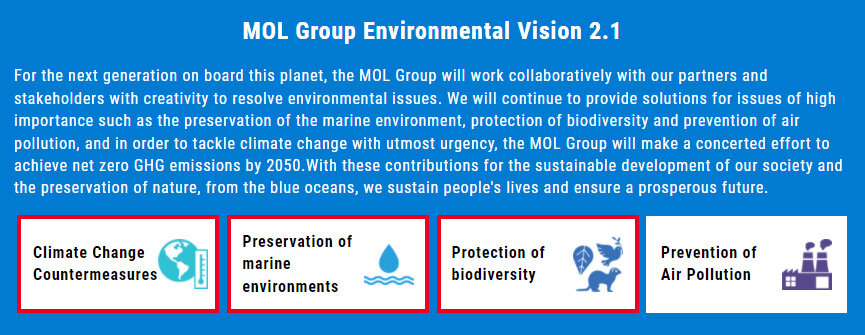
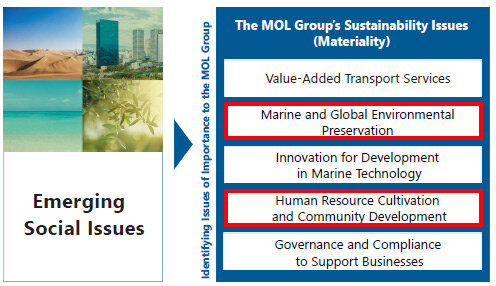
[About Mitsui O.S.K. Lines, Ltd.]
Founded in 1884, MOL is a multimodal corporate group operating one of the world's largest fleets, with over 800 vessels. It develops various social infrastructure businesses, mainly in the ocean shipping industry, transporting diverse commodities such as resources, energy, raw materials, and finished products, but also in other businesses such as offshore, wind power energy, ferries, coastal ships, tugboats, warehousing, maritime consulting, real estate, and cruise ships, supporting people's lives and industries all over the world.
Website: https://www.mol.co.jp/en/index.html
[About YLF]
Founded in 1970 as Yamamoto Timber Industries, Ltd. The company engaged in the timber import business over three decades. But current Chairman Akira Yamamoto, was aware of the severity of environmental destruction, shifted the company's business operations to tree planting activities in 2004, and in 2006 started mangrove reforestation in Indonesia. YLF also works to create a society in harmony with the natural environment through entrustment by with companies for mangrove reforestation and the "Silvofishery business (combining "silviculture" and "fishery" to achieve both mangrove afforestation and regeneration of aquaculture).
Website: https://ylforest.co.jp/en-top/
(Note 1) Blue carbon
Blue carbon is derived from CO2 sequestrated and stored by marine ecosystems such as mangroves, seagrass meadows, and salt marshes. It was defined for the first time in a report by the United Nation's Environmental Programme (UNEP) in October 2009, and along with "green carbon," which is derived from CO2 absorbed by terrestrial forests and so on, is drawing attention as nature-based negative emission (Note 8).
(Note 2) The project
YLF is engaged in the OKI REDD+ project under a business license from the prefectural governor of Ogan Komering Ilir (OKI) prefecture in South Sumatra Province. REDD+ encompasses activities to reduce emissions from deforestation and forest degradation, promote conservation, sustainably manage forests, and enhance forest carbon stocks in developing countries, efforts highlighted as measures to address climate change.
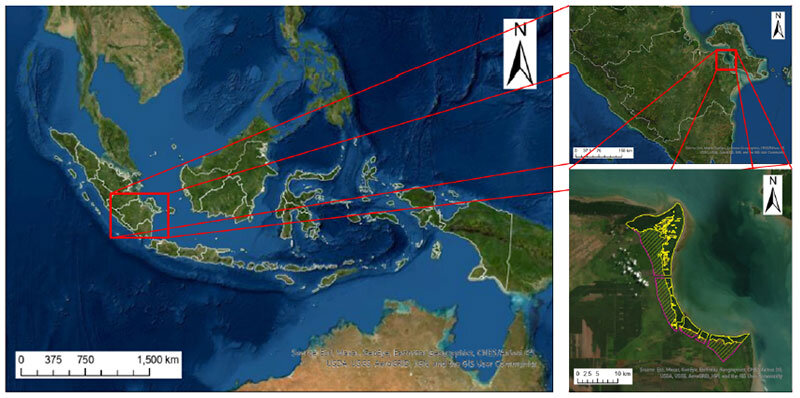
(Note 3) ISME
ISME was established in 1990 as an international NPO/NGO that works to conserve mangrove ecosystems and so on. The organization has over 1,300 individual members in 94 nations and regions around the world. It has conducted research and afforestation activities in over 30 nations, and provided training programs for more than 250 foreigners. It acts internationally as an NGO with advisory status to the United Nations Economic and Social Council (UNECOSOC), and domestically as an NPO in Japan. ISME Executive Director and Professor Emeritus, University of the Ryukyus Dr. Shigeyuki Baba also serves as a technical advisor to YLF.
Website: http://mangrove.or.jp/english/index.html
(Note 4) Verra
Verra (Washington D.C., U.S.) is an international carbon offset standard management organization that manages and certifies the "Verified Carbon Standard (VCS)," which is the most broadly used in the world.
(Note 5) Silvofishery
Silvofishery is a method of combining silviculture and fishery by planting mangroves in shrimp farms to nurture shrimp and fishes in a near-native environment. It has the following characteristics.
- A method of aquaculture in harmony with nature that does not pollute the environment, because it does not require the use of feeding or chemicals .
- It allows for sustainable aquaculture while significantly reducing operating costs through ongoing appropriate forest management. This contributes to improvement of local residents' livelihood.
- Co-benefits are also expected, such as measures to adapt to climate change with wave protection for shorelines, water purification, soil remediation, and ecosystem recovery and conservation.
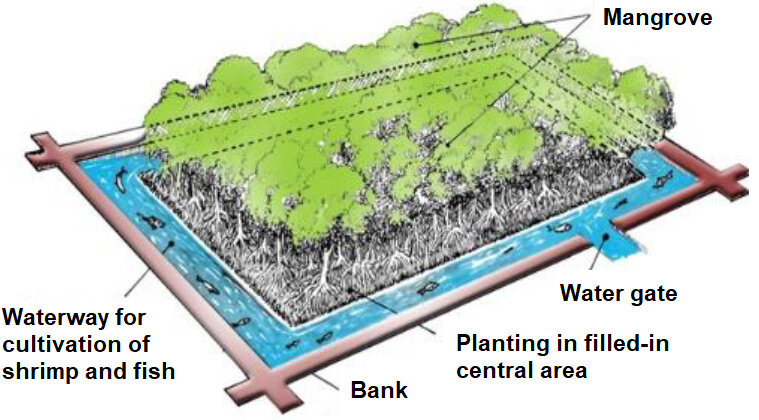
(Note 6) Natural environment recovery project in Mauritius
Through the launch of the Mauritius Environmental and Social Contribution Team, MOL implements social contribution activities such as environmental protection and recovery projects including protection of mangroves and coral reefs, and provides financial support for public institutions and local non-governmental organizations (NGOs), as well as local governments.
(Note 7) Nature positive
The goal of nature positive is to avoid loss of biodiversity and help nature make positive impacts that surpass negative impacts. Putting biodiversity on a path to recovery by 2030 is considered essential to ensuring a sustainable future for all life on the planet.
(Note 8) Negative emission
The term "negative emissions" refers to removing and storing CO2 from the atmosphere. There are two main categories-nature-based solutions that increase CO2 absorption in nature such as forests and blue carbon; and technology-based solutions that removeCO2 from the atmosphere by using chemical engineering technologies.
